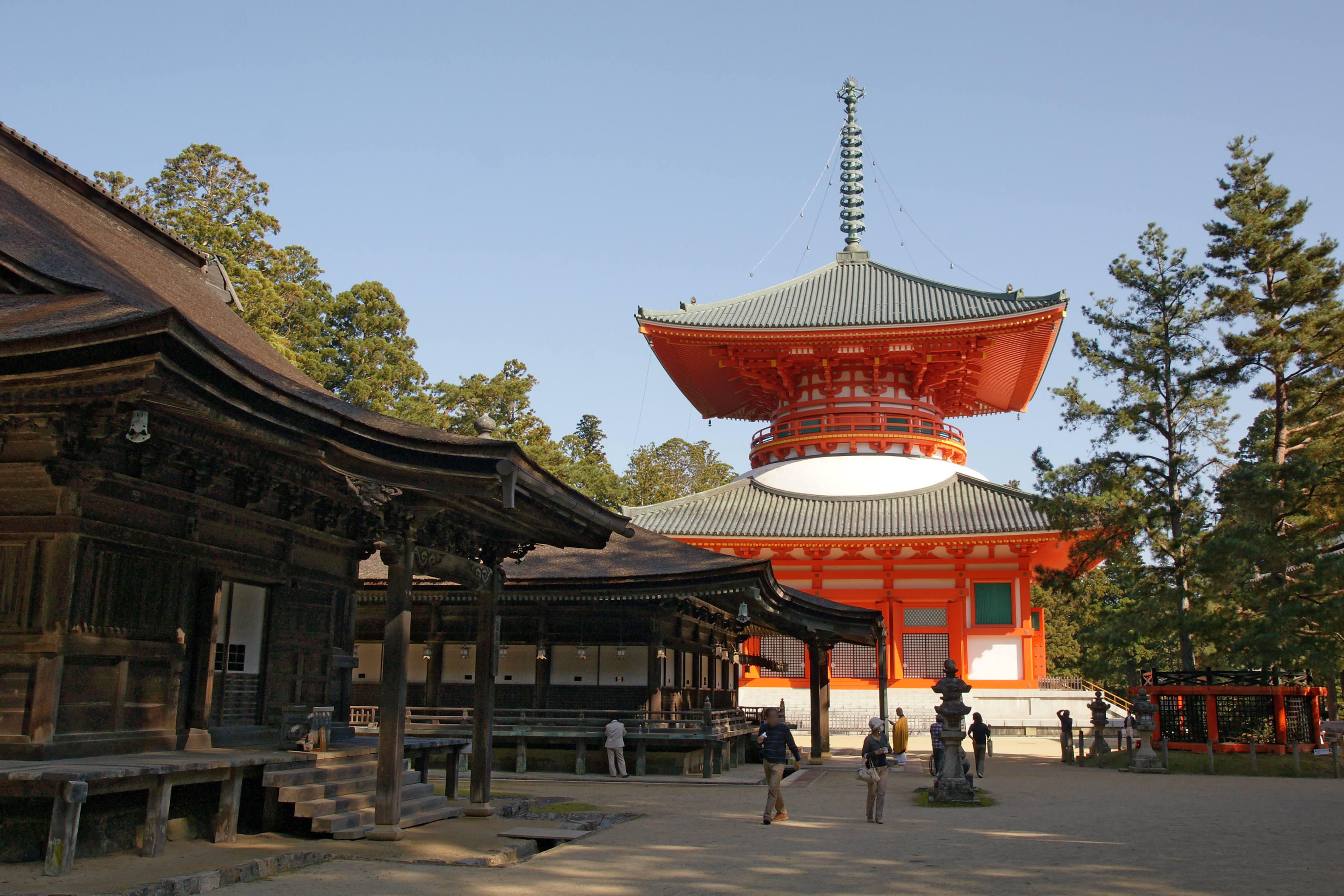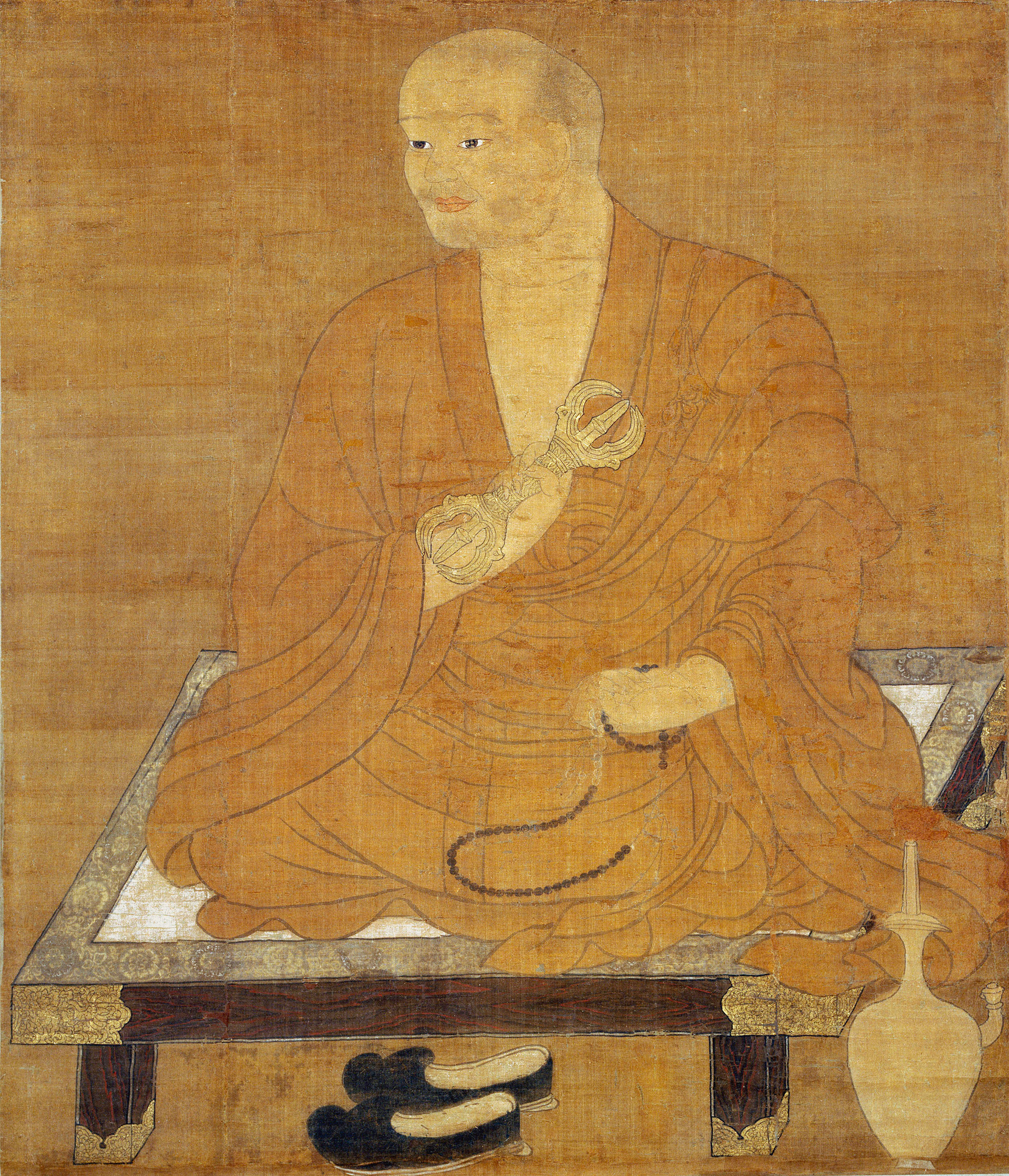|
Jōdo-ji (Ono)
The is a temple of the Shingon sect in Ono, Hyōgo, Japan. It was first established by Chōgen in 1190 – 1198, and the temple structures have undergone several reconstruction efforts since then, with the last reconstruction taking place in 1632. Jōdo-ji's Jōdodō completed in 1194 is a National Treasure of Japan. The architecture is in the Daibutsu style that combines Japanese and Chinese elements. List of buildings *Jōdodō – built in 1194. National Treasure of Japan. * Yakushiō (Main hall) – Important Cultural Property of Japan. It was rebuilt in 1517. *Hachiman-jinja honden – Important Cultural Property of Japan. *Hachiman-jinja haiden – Important Cultural Property of Japan. * Kaizanō – rebuilt in 1520. *Bell tower – rebuilt in 1632. * Fudodō * Monjudō *Kyozō List of sculptures * Amitabha Triad – National Treasure of Japan. Kaikei's most important work. It is a work in 1195–1197. Height: 24.6 ft *Amitabha – Important Cultural P ... [...More Info...] [...Related Items...] OR: [Wikipedia] [Google] [Baidu] |
Shingon Buddhism
is one of the major schools of Buddhism in Japan and one of the few surviving Vajrayana lineages in East Asian Buddhism. It is a form of Japanese Esoteric Buddhism and is sometimes called "Tōmitsu" (東密 lit. "Esoteric uddhismof Tō-ji"). The word ''shingon'' is the Japanese reading of the Chinese word ('), which is the translation of the Sanskrit word mantra. The Zhēnyán lineage was founded in China (c. 7th–8th centuries) by Indian vajrācāryas (esoteric masters) like Śubhakarasiṃha, Vajrabodhi and Amoghavajra. These esoteric teachings would later flourish in Japan under the auspices of a Buddhist monk named Kūkai (, 774–835), who traveled to Tang China and received these esoteric transmissions from a Chinese master named Huiguo (746–805). Kūkai established his tradition at Mount Kōya (in Wakayama Prefecture), which remains the central pilgrimage center of Shingon Buddhism. The practice of the Shingon school stresses that one is able to atta ... [...More Info...] [...Related Items...] OR: [Wikipedia] [Google] [Baidu] |
1190s Establishments In Japan , a hypothetical chemical element with atomic number 119
*
{{Number disambiguation ...
119 may refer to: * 119 (number), a natural number * 119 (emergency telephone number) * AD 119, a year in the 2nd century AD * 119 BC, a year in the 2nd century BC * 119 (album), 2012 * 119 (NCT song) * 119 (Show Me the Money song) * 119 (film), a Japanese film, see Naoto Takenaka * 119 (MBTA bus) * List of highways numbered 119 * 119 Althaea, a main-belt asteroid See also * 11/9 (other) * 911 (other) * Ununennium Ununennium, also known as eka-francium or element 119, is a hypothetical chemical element; it has symbol Uue and atomic number 119. ''Ununennium'' and ''Uue'' are the temporary systematic element name, systematic IUPAC name and symbol respectivel ... [...More Info...] [...Related Items...] OR: [Wikipedia] [Google] [Baidu] |
List Of National Treasures Of Japan (sculptures)
In the mid-6th century, the introduction of Buddhism from the Koreanic state Baekje to Japan resulted in a revival of Japanese sculpture. Buddhist monks, artisans and scholars settled around the capital in Yamato Province (present day Nara Prefecture) and passed their techniques to native craftsmen. Consequently, early Japanese sculptures from the Asuka period, Asuka and Hakuhō period, Hakuhō periods show strong influences of continental art, which initially were characterized by almond-shaped eyes, upward-turned crescent-shaped lips and symmetrically arranged folds in the clothing. The workshop of the Japanese sculptor Tori Busshi, who was strongly influenced by the Northern Wei style, produced works which exemplify such characteristics. The Shaka Nyorai, Shakyamuni triad and the Guze Guanyin, Kannon at Hōryū-ji are prime examples. By the late 7th century, wood replaced bronze and copper. By the early Tang dynasty, greater realism was expressed by fuller forms, long narrow slit ... [...More Info...] [...Related Items...] OR: [Wikipedia] [Google] [Baidu] |
Shingon
is one of the major schools of Buddhism in Japan and one of the few surviving Vajrayana lineages in East Asian Buddhism. It is a form of Japanese Esoteric Buddhism and is sometimes called "Tōmitsu" (東密 lit. "Esoteric [Buddhism] of Tō-ji"). The word ''shingon'' is the Kan-on, Japanese reading of the Traditional Chinese characters, Chinese word ('), which is the translation of the Sanskrit word mantra. The Chinese Esoteric Buddhism, Zhēnyán lineage was founded in China (c. 7th–8th centuries) by Indian Vajracharya, vajrācāryas (esoteric masters) like Śubhakarasiṃha, Vajrabodhi and Amoghavajra. These esoteric teachings would later flourish in Japan under the auspices of a Buddhist monk named Kūkai (, 774–835), who traveled to Tang dynasty, Tang China and received these esoteric transmissions from a Chinese master named Huiguo (746–805). Kūkai established his tradition at Mount Kōya (in Wakayama Prefecture), which remains the central pilgrimage center of Sh ... [...More Info...] [...Related Items...] OR: [Wikipedia] [Google] [Baidu] |
Nirvana
Nirvana, in the Indian religions (Jainism, Hinduism, Buddhism, and Sikhism), is the concept of an individual's passions being extinguished as the ultimate state of salvation, release, or liberation from suffering ('' duḥkha'') and from the cycle of birth and rebirth ('' saṃsāra''). In Indian religions, nirvana is synonymous with ''moksha'' and ''mukti''. All Indian religions assert it to be a state of perfect quietude, freedom, and highest happiness; liberation from attachment and worldly suffering; and the ending of ''samsara'', the cycle of existence.Gavin Flood, ''Nirvana''. In: John Bowker (ed.), '' Oxford Dictionary of World Religions'' However, non-Buddhist and Buddhist traditions describe these terms for liberation differently. In Hindu philosophy, it is the union of or the realization of the identity of Atman with Brahman, depending on the Hindu tradition. In Jainism, nirvana is also the soteriological goal, representing the release of a soul from karmic bondage ... [...More Info...] [...Related Items...] OR: [Wikipedia] [Google] [Baidu] |
Gorintō
("five-ringed tower") is a Japanese type of Buddhist pagoda believed to have been first adopted by the Shingon and Tendai sects during the mid Heian period. It is used for memorial or funerary purposesKōjien Japanese Dictionary and is therefore common in Buddhist temples and cemeteries. It is also called ("five-ringed stupa") or , where the term ''sotoba'' is a transliteration of the Sanskrit word stupa. The stupa was originally a structure or other sacred building containing a relic of Buddha or of a saint, then it was gradually stylized in various ways and its shape can change quite a bit according to the era and to the country where it is found.Home Study Course on Basic Buddhism Often offertory strips of wood with five subdivisions and covered with elaborate inscriptions also called ''sotoba'' can be found at tombs in Japanese cemeteries (see photo below). The inscriptions contain sūtra texts and the posthumous name of the dead person. These can be considered stupa varia ... [...More Info...] [...Related Items...] OR: [Wikipedia] [Google] [Baidu] |
Drum
The drum is a member of the percussion group of musical instruments. In the Hornbostel–Sachs classification system, it is a membranophone. Drums consist of at least one membrane, called a drumhead or drum skin, that is stretched over a shell and struck, either directly with the player's hands, or with a percussion mallet, to produce sound. There is usually a resonant head on the underside of the drum. Other techniques have been used to cause drums to make sound, such as the thumb roll. Drums are the world's oldest and most ubiquitous musical instruments, and the basic design has remained virtually unchanged for thousands of years. Drums may be played individually, with the player using a single drum, and some drums such as the djembe are almost always played in this way. Others are normally played in a set of two or more, all played by one player, such as bongo drums and timpani. A number of different drums together with cymbals form the basic modern drum kit. Many ... [...More Info...] [...Related Items...] OR: [Wikipedia] [Google] [Baidu] |
Saint
In Christianity, Christian belief, a saint is a person who is recognized as having an exceptional degree of sanctification in Christianity, holiness, imitation of God, likeness, or closeness to God in Christianity, God. However, the use of the term ''saint'' depends on the context and Christian denomination, denomination. In Anglican Communion, Anglican, Oriental Orthodox, and Lutheranism, Lutheran doctrine, all of their faithful deceased in Heaven are considered to be saints, but a selected few are considered worthy of greater honor or emulation. Official Ecclesiastical polity, ecclesiastical recognition, and veneration, is conferred on some denominational saints through the process of canonization in the Catholic Church or glorification in the Eastern Orthodox Church after their approval. In many Protestant denominations, and following from Pauline usage, ''saint'' refers broadly to any holy Christian, without special recognition or selection. While the English word ''saint'' ... [...More Info...] [...Related Items...] OR: [Wikipedia] [Google] [Baidu] |
Chōgen
was a after '' Manju'' and before ''Chōryaku.'' This period spanned the years from July 1028 through April 1037. The reigning emperors were and . Change of era * 1028 : The new era name ''Chōgen'' was created to mark and event or series of events. The previous era ended and the new one commenced in ''Manju'' 5, on the 25th day of the 7th month. Events of the ''Chōgen'' era * ''Chōgen 9'', on the 17th day of the 4th month (1036): In the 9th year of Emperor Go-Ichijō's reign (後一条天皇9年), he died; and the succession (''senso'') was received by his son. * ''Chōgen 9'', in the 7th month (1036): Emperor Go-Suzaku is said to have acceded to the throne (''sokui'').Titsingh, p. 160; Varley, p. 44. Notes References * Brown, Delmer M. and Ichirō Ishida, eds. (1979) ''Gukanshō: The Future and the Past.''Berkeley: University of California Press. OCLC 251325323* Nussbaum, Louis-Frédéric and Käthe Roth. (2005) ''Japan encyclopedia.''Cambridge: Harvard University Pre ... [...More Info...] [...Related Items...] OR: [Wikipedia] [Google] [Baidu] |
Nara National Museum
The is one of the pre-eminent national art museums in Japan. Introduction The Nara National Museum is located in Nara, which was the capital of Japan from 710 to 784. Katayama Tōkuma (1854–1917) designed the original building, which is a representative Western-style building of the Meiji period and has been designated an Important Cultural Property in Japan. Junzō Yoshimura (1908–1997) designed a supplemental building in 1973. Collections The museum is noted for its collection of Buddhist art, including images, sculpture, and altar articles. The museum houses and displays works of art belonging to temples and shrines in the Nara area. Properties kept in the Shōsōin repository are exhibited each year in the autumn. In the museum's collection is the 12th-century , 11th or 12th-century mandala Jōdo mandara-zu, and the 9th-century sculpture of the seated Buddha Yakushi. History The Nara National Museum was established in 1889 as the Imperial Nara Museum ''(帝国奈 ... [...More Info...] [...Related Items...] OR: [Wikipedia] [Google] [Baidu] |



